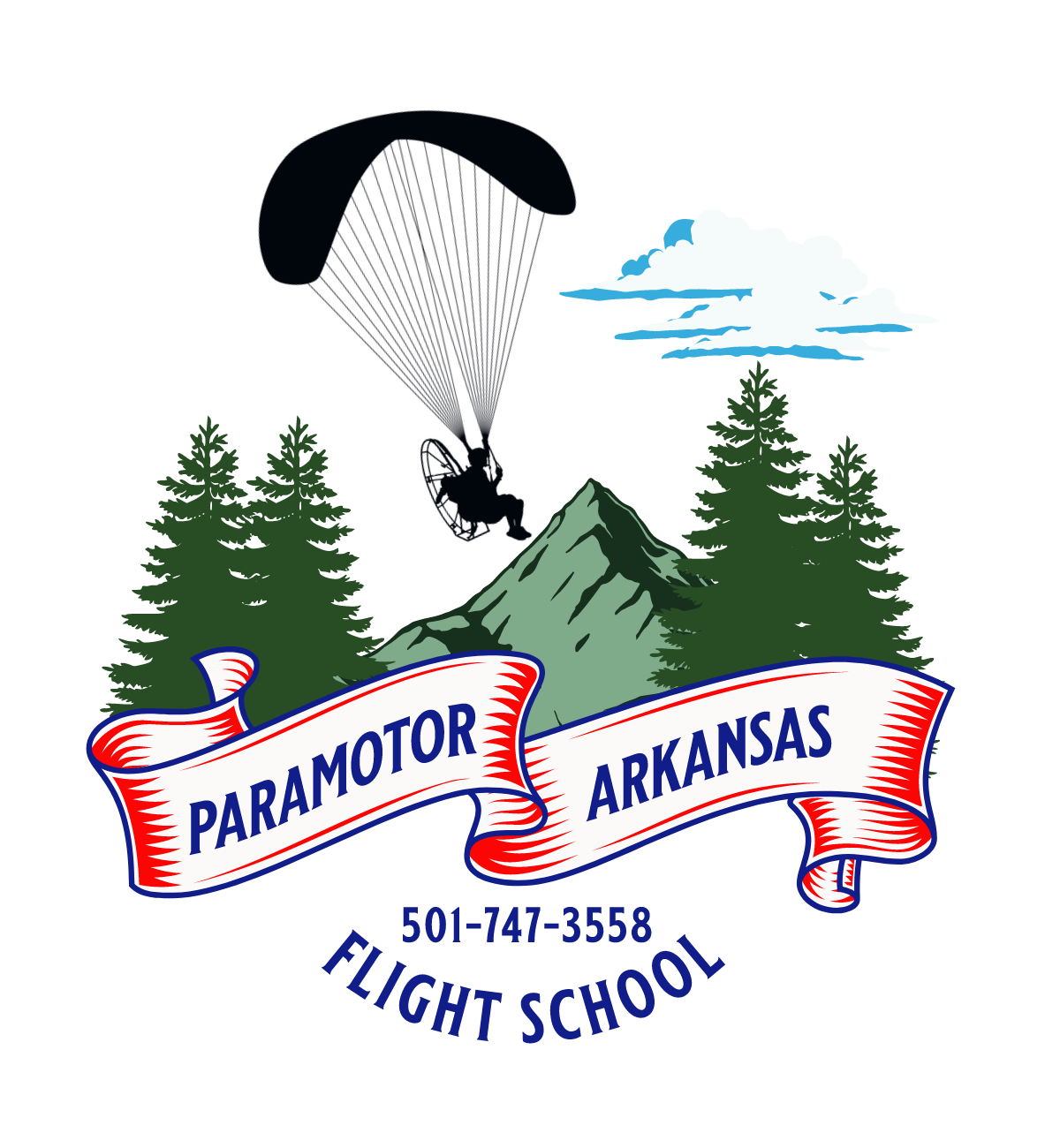Paramotor Terminology I
-
Paramotor: A motorized backpack unit consisting of an engine and propeller that provides thrust for powered paragliding.
-
Paraglider: A fabric wing with lines and risers that, when inflated, generates lift, allowing a pilot to glide through the air.
-
Thrust: The forward force produced by the paramotor's engine and propeller, propelling the pilot and wing forward.
-
Risers: Straps or lines connecting the pilot's harness to the paraglider wing, used for control.
-
Lines: Thin ropes connecting the risers to the paraglider wing, transmitting control inputs from the pilot to the wing.
-
Carabiners: Connectors used to attach the risers to the harness, facilitating quick and secure connections.
-
Trimmers: Adjustable straps on the risers that control the angle of attack of the paraglider wing.
-
Throttle: A hand-operated control that regulates the power output of the paramotor's engine.
-
Cage: The frame supporting the paramotor's engine and protecting the propeller.
-
Harness: The seat and suspension system worn by the pilot, connecting them to the paramotor.
-
Reserve Parachute: A backup parachute carried by paramotor pilots for emergency situations.
-
Landing Gear: Wheels or other structures aiding takeoff and landing on flat surfaces.
-
Pilot-in-Command (PIC): The person responsible for the operation and safety of the paramotor during flight.
-
Windsock: A conical textile tube indicating wind direction and speed at a launch site.
-
Ground Handling: Controlling the paraglider on the ground, including inflation, taxiing, and takeoff preparation.
-
Foot Launch: Taking off on foot without assistance, a common method in paramotoring.
-
Trike: A wheeled unit allowing seated takeoff and landing, often used by paramotor pilots.
-
Launch: The process of becoming airborne from the ground.
-
Altitude: The height above a specified reference point, usually measured in feet or meters.
-
Airspeed: The speed of the paramotor through the air, crucial for control and navigation.
-
Glide Ratio: The ratio of horizontal distance traveled to vertical distance descended during unpowered flight.
-
Weight Shift: Shifting body weight to control the direction of flight.
-
Banking: Tilting the paraglider wing to one side for turning.
-
Pendulum Effect: The swinging motion of the paramotor beneath the paraglider during flight.
-
Wing Loading: The weight supported by each square meter of the paraglider wing.
-
* Vortex Ring State (VRS): A dangerous condition where the paramotor descends rapidly in its own downwash.
-
Wing Overs: A maneuver involving aggressive weight shifting to induce a steep turn.
-
Spiral Dive: A controlled, spiraling descent maneuver.
-
Barometric Altitude: Altitude measured using atmospheric pressure.
-
GPS Altitude: Altitude measured using GPS technology.
-
Crosswind: Wind blowing across the intended flight path.
-
Headwind: Wind blowing directly against the flight path.
-
Tailwind: Wind blowing in the same direction as the flight path.
-
Rotor: Turbulent air behind an obstacle, often encountered near the ground.
-
* Polar Curve: A graph showing the relationship between airspeed and sink rate.
-
* Pitot Tube: A device used to measure airspeed.
-
Stall: A condition where the airflow over the wing becomes separated, resulting in a loss of lift.
-
Angle of Attack: The angle between the oncoming air and the chord line of the wing.
-
In-Flight Adjustments: Changes made to the trimmers or other controls during flight.
-
Spot Landing: A precision landing on a specified target.
-
Wind Cone: A visual indicator of wind direction and relative speed at an airfield.
-
Ground Speed: The speed of the paramotor relative to the ground.
-
Torque Effect: The twisting force created by the rotation of the propeller.
-
Bollard: A sturdy anchor point used for ground handling or training.
-
* Torso Twist: A technique to counter torque effect by twisting the torso.
-
Wind Gradient: Changes in wind speed and direction with altitude.
-
Ground Speed: The speed of the paramotor relative to the ground.
-
Dead Air: Calm or still air with minimal thermal activity.
-
Back Fly: Flying the paraglider wing backward.
-
Forward Launch: Taking off by moving forward.
* not very common but interesting. We will talk about these in class.
